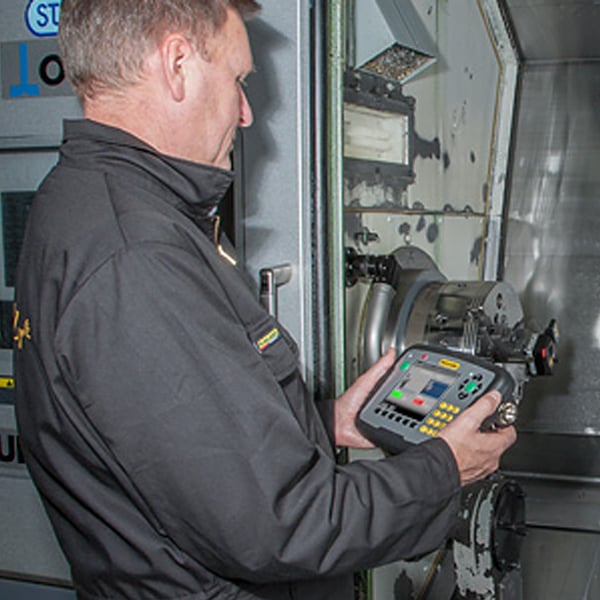How To Minimize Unplanned Downtime With Preventative Maintenance

For a manufacturing or industrial operation, every lost minute of production time is critical. Unscheduled downtime can end up costing significant time and money and businesses need to find ways to stop, or at least, minimise delays and disruptions.
Despite the obvious negatives arising from unplanned downtime, many operations see ongoing equipment testing and inspection as a burden. In reality however, it is a business imperative and very often, is a competitive advantage.
The issue shouldn’t be approached from the linear perspective of ‘we need to keep our equipment running at optimum production levels, so what must we do to prevent break downs?’ Instead, it needs a dynamic, positive problem-solving mentality that incorporates every aspect of the business, but most importantly, which focuses on the human element.
Preventative maintenance isn’t new and there have been many different incarnations of the concept over the years such as overall equipment effectiveness (OEE), total productive maintenance (TPM) and reliability centred maintenance (RCM). But because people make things happen in the workplace, it’s so critical that organisations create a culture where everyone understands their roles and responsibilities AND follows through on them.
Even if the business relies on automated equipment – it’s impossible to avoid production losses simply because you have the right testing instrument, or because you have drawn up reams of detailed maintenance policies or procedures. The human element is ultimately responsible for making sure that things run smoothly, efficiently, timeously and cost-effectively.
So, as you work through this checklist of how to use preventative maintenance to minimise unplanned downtime, keep your people top of mind and find ways of incentivising and empowering them to solve the problems. They’re your frontline so invite their input and involve them in the decision-making process. Employee mindset and a determination to solve problems proactively rather than reactively will determine the success of your preventative maintenance schedule.
- Get your machine operators to ‘own’ their processes
When workers take responsibility for basic maintenance work and problem notification on their machines and the process, it not only increases their skills and empowers them to push for optimal outcomes, the continuous monitoring also reduces the likelihood of unplanned downtime.
- Schedule planned maintenance far in advance.
As obvious that sounds, it’s surprising how many operations only make short-term plans. Plan well ahead to take advantage of slower output times (for example if your operation slows down over Christmas) and ensure that you allocate sufficient downtime for a comprehensive check. In addition, you need to ensure that your team practices regular, ongoing preventative maintenance strategies which include things like keeping equipment clean, using appropriate lubrication and using non-destructive testing equipment (like laser alignment systems) to ensure machinery is operating optimally.
- Ensure you have the relevant parts and accessories
Many operations have fallen into the trap of stocking up with tools, parts and accessories necessary for both scheduled and emergency repairs, but fail to replenish their inventory as these are used over time. This can result in longer than expected equipment stoppages and production delays.
- Audit maintenance stock regularly
What’s the point of having a stock room full of obsolete components or spares? A regular review of your maintenance stock will ensure that you don’t keep parts for equipment that’s no longer in service or keep superseded spares unnecessarily.
- Take the age of the equipment into consideration when scheduling maintenance checks
You may well have detailed policies and procedures in place for your equipment maintenance, but does the frequency of checks increase as the equipment gets older? The age of the plant and equipment is often overlooked when it comes to maintenance scheduling, yet it is imperative to inspect older equipment more often. And even though this may mean more regular planned downtime, it is ultimately better than unexpected breakdowns.
- Involve the operator in daily checks and condition-monitoring of equipment
The operator should continuously look for ways to improve the service and operation of the equipment and check for issues. They should keep a comprehensive record of the equipment’s maintenance history and track any downtime, and use that information to plan future servicing or pre-empt potential problems. But remember, the human element is critical – and if the operator voices concerns about any maintenance or production issues – address them immediately.
- Train employees properly
You need to rely on your team to operate the equipment correctly, so comprehensive training is essential to minimise operator instigated slowdowns or shutdowns.
Preventative maintenance isn’t just about allocating time in the diary to clean and check equipment. Regular maintenance through testing and inspections will save businesses time and money over the long-run, and it should be an all-encompassing strategy in which every member of the team participates.
What many businesses don’t realise is that the company which supplies the testing and inspection equipment can also play an invaluable role in improving operations and building a successful business.
An experienced and knowledgeable supplier like Nexxis takes a problem-solving approach to preventative maintenance and develops practical, innovative and cost-effective solutions that make sense from both an operational and bottom-line perspective. If you want to find out how Nexxis can help you maximise your preventative maintenance strategy to minimise disruption and costly downtime, contact us today.
